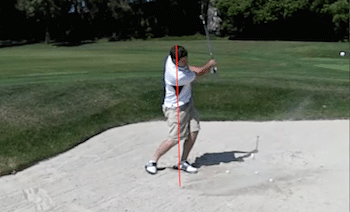The bunker is often one of the most feared places to miss a green for the average golfer, yet when we look at professionals they make it look like a walk in the park. So why is it that the same hazard provides two very different levels of difficulty and fear for each player. Skill is often the most obvious answer, and that certainly has a huge part to play in the shot, but I would also say understanding how the shot should be played has an even bigger role.
The first thing we must think of is the impact and how we want to strike the golf ball. The sand is a very different animal than the grass and we want to approach it in a very different way. The biggest difference when we compare a bunker shot to a shot from grass is where we contact the ground relative to the golf ball. When we play any shot from grass it is important to contact the ball first as the club descends towards the ground. If we catch the ground heavily prior to the ball we will “duff” or “fat” the golf ball. Conversely with a bunker shot we have to contact the sand first, and almost slide the golf club underneath the golf ball. By doing this we can accelerate the club nicely through the sand without sending the golf ball over the green. But what changes can we make to achieve this result?
SET UP
If we look at the above image of Padraig Harrington you will see a very different look to his set up position compared to a pitch shot of similar length he may play off grass. You will notice the golf ball has been pushed towards his left foot and in front of the centre of his body as shown by the red line. This will be a key aspect to making contact before the ball and producing a shallow strike. You will also see from the above image that his club face is extremely open, and sitting on its back edge. This is another important part of a good strike from a bunker as by the back edge entering the sand first rather than the leading edge, the club will never dig into the stand and produce a heavy contact.
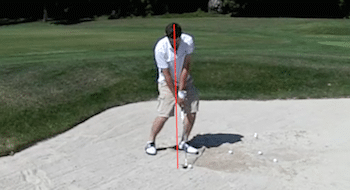
BACKSWING
You will notice as Padraig swings the club back there is no lateral movement of his body, his head has remained in the same position just behind the golf ball. The less lateral movement you can produce throughout a bunker shot, the easier it will be to control the clubs entry point into the sand.
You will also see that in the backswing that Padraig has maintained a very open club face by allowing it to naturally rotate. This can often be the undoing for most amateur golfers as they will commonly have a very steep backswing and attempt to hit down heavily on the golf ball. If you allow the club to swing around you a little more you will significantly increase your chances of getting the ball close from a bunker.
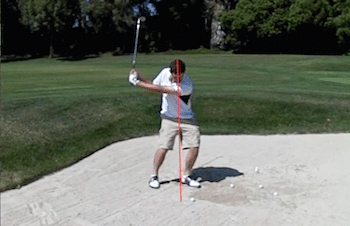
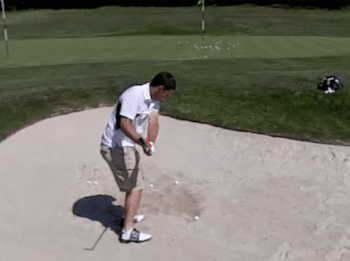
IMPACT
As we look at Padraig a couple of frames after impact you can clearly see the club has actually outraced his hands after the ball has left the sand. Often the average golfer will try to lean the handle of the club forward through impact in an effort to somehow get the golf ball out, however doing this will in fact have the opposite affect and cause the club to dig into the sand. We would like to see the club passing the hands which will help keep the face open through impact and allow the back of the club strike the sand first. You will also see again that Harrington’s head and body has stayed exceptionally centred throughout this swing.
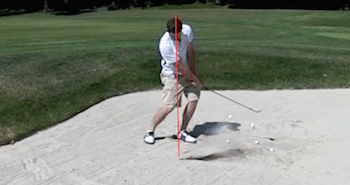
FOLLOW THROUGH
Harrington’s finishing position is very close to a full swing in terms of length, however you will see less of a forward move with his body towards the target. This will allow Padraig to maintain speed in the club head but still allow the club to enter the sand before the ball. If there was more movement towards the target he would risk catching the ball too cleanly and ending up with a shot that would travel too far.
